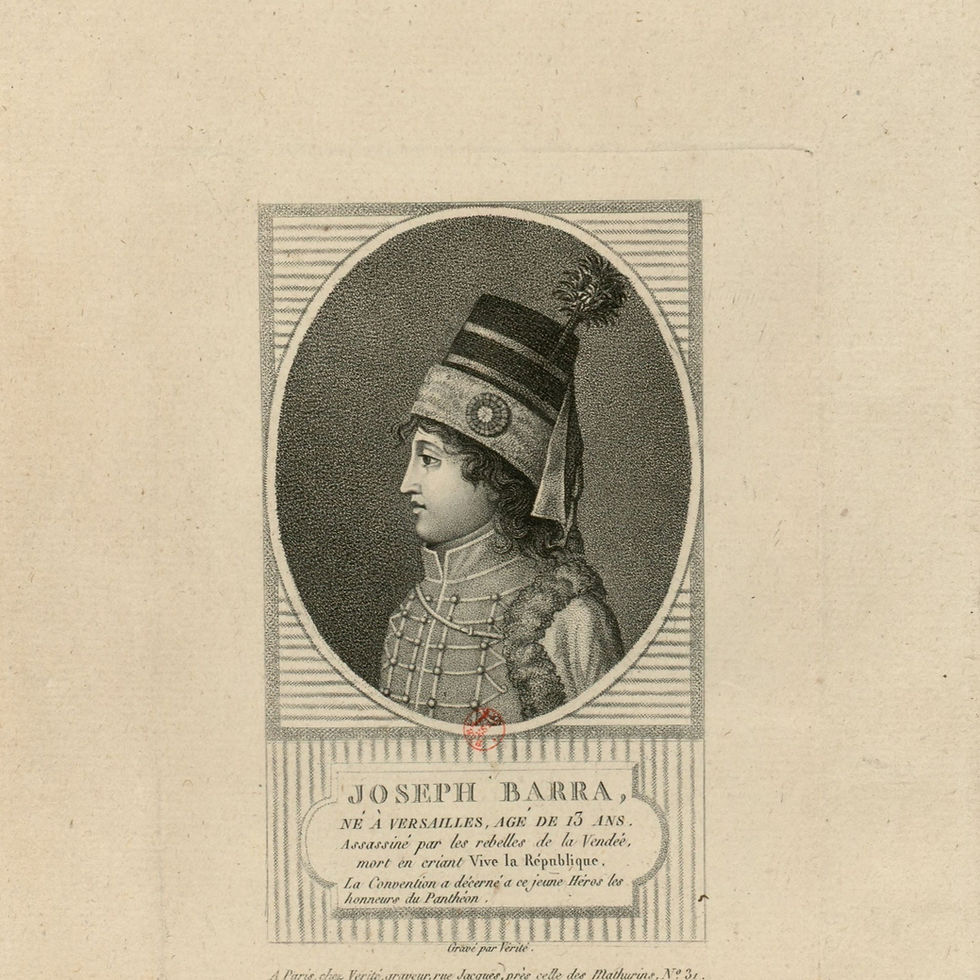Why trousers and not hats?
- ptabor001
- Apr 26, 2020
- 2 min read
Updated: May 14, 2020
The Sans-culottes were a group of people during the French Revolution made up of Parisian wage-earners and small shop owners who's goals were to have a greater voice in the government, lower prices on necessities, and an end of food shortages. The Sans-culottes consisted of the common people of the lower classes in late 18th century France, which would make them the considerable majority of France. Encouraged by the so-called angry men, the sans-culottes men and women were demanding radical political action in order to obtain their economic rights.

<- Here is a great comparison between the trousersThe literal definition of sans-culottes is "without knee breeches". Kings, nobles, and anyone else considered upper class of the old regime would wear pants up to their knees and then socks on top of the pants. So during the revolution, many clubs and associations would follow the fashion trends set by the upper classes. However, most of the sans-culottes didn't have the money to keep up with the fashion scene. Once they gained a following from people with more money, even the wealthier wouldn't keep up with the latest fashion scene because they wanted to both represent themselves as sans-culottes and keep themselves away from the fashionable sectors of the society.
The distinctive costume of the typical sans-culotte was the long trousers, as well as the "carmagnole" (or short jacket), and the red cap of liberty. So why call them "sans-culottes" and not "carmagnoles" or red caps? The Phrygian caps (red caps) were just as important to the Frenchmen during the revolution. "When on 20 June 1792 the crowd invaded the Tuileries and confronted King Louis XVI, they forced him to put on one of these caps" (Tribe, 551). So we know how much the caps meant to the crowd, so why are they the sans-culottes? Well that same day, the 20th of June, an English physician and prolific travel writer by the name of John Moore was a spectator of the entire incident. He wrote that prior to the storming of the Bastille, the crowd was carrying signs and posters (which are translated) reading; "Tremble tyrants, or be just and respect the liberty of the people", also "Tremble tyrant, your last hour has come", as well as "Recall the ministers, the sanctions, or death", and finally one read "Free - and without breeches" or in French, "Libres - et sans-culottes".
So essentially the name sans-culottes came from a British man who simply saw one of the signs and reported it. No one at that time had any clue how much that simple sign would affect the revolution. Since the beginning of France, the common people had always followed the regime of the wealthy. This is the first time we had ever seen such a large group of people stray away from the "normal" and use that to fight for what they believed in.
TRIBE, KEITH.The Economic History Review, vol. 63, no. 2, 2010, pp. 551–552.JSTOR, www.jstor.org/stable/27771644. Accessed 11 May 2020.
Gershoy, Leo. “The Paris Sans-Culottes.”The Journal of Modern History, vol. 32, no. 1, 1960, pp. 25–27.JSTOR, www.jstor.org/stable/1871823. Accessed 11 May 2020.
“Louis XVI and the Legislative Assembly.” Wikipedia, Wikimedia Foundation, 14 Apr. 2020, en.wikipedia.org/wiki/Louis_XVI_and_the_Legislative_Assembly.
“The sans-Culottes Invade the Tuileries Palace, French Revolution, 20 June 1792: French Revolution, History Images, Revolution.” Pinterest, www.pinterest.co.uk/pin/241575967490693672/.





Wow, I always figured that they were self-proclaimed sans-culottes and that they related more with the pants than the hats but I guess not! Very cool.
This is super interesting- I don't remember talking about red hats or their significance in class. It shows how little actions can be significant.